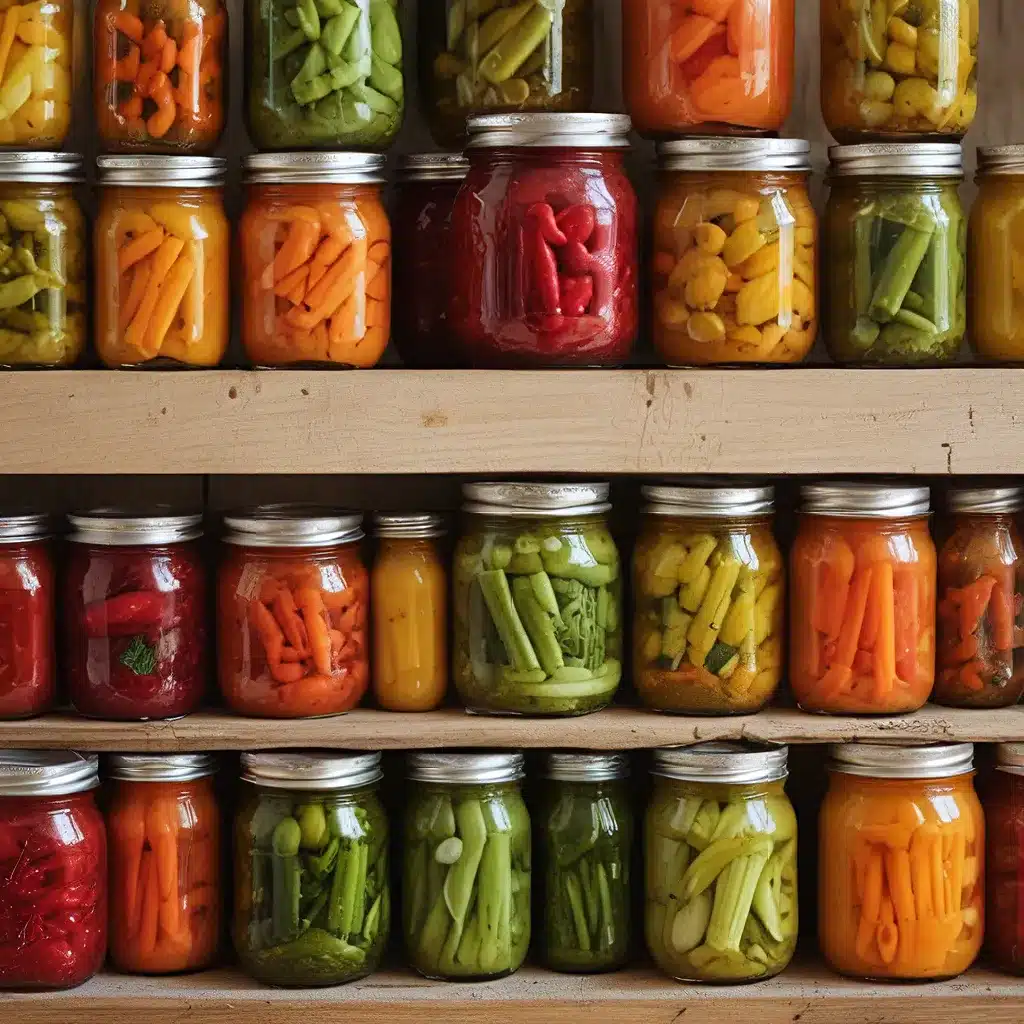
As a self-proclaimed homesteading enthusiast, I’ve always been fascinated by the art of preserving the bounty of my garden. Nothing beats the satisfaction of cracking open a jar of homemade pickles or savoring the sweet, tangy flavors of home-canned fruits and veggies in the dead of winter. But let’s be honest – the world of canning and pickling can be a bit intimidating, especially for those new to the game.
That’s why I’m here to share my hard-won wisdom on the best DIY canning and pickling techniques. Whether you’re a seasoned homesteader or a curious city-dweller looking to get in touch with your inner Martha Stewart, this article is your ultimate guide to mastering the art of preserving the harvest.
Mastering the Canning Basics
Canning is the foundation of preserving the harvest, and it’s a skill that every home cook should have in their arsenal. The process may seem daunting at first, but trust me, once you get the hang of it, you’ll be canning up a storm.
The key to successful canning is understanding pH levels and acidity. Most pickles and other low-acid foods need to be preserved in a way that lowers the pH to a safe level, typically below 4.6. This can be done by adding vinegar or through a process called fermentation, which creates lactic acid.
Vinegar-based pickles are the quickest and easiest way to get started with canning. Simply fill your jars with your desired veggies or fruits, cover them with a vinegar-based brine, and process them in a water bath canner. This method is perfect for creating crisp, flavorful pickles that can be enjoyed within a few hours or stored for months on end.
Fermented pickles, on the other hand, take a bit more time and patience, but the results are well worth it. By harnessing the power of beneficial bacteria, you can create pickles that are not only deliciously crunchy but also packed with probiotic goodness. The key is to submerge your veggies in a saltwater brine and let the natural fermentation process do its thing over the course of several weeks.
Whichever canning method you choose, it’s important to follow the recipe precisely and use the proper equipment to ensure food safety. This means investing in a quality water bath canner, high-quality jars and lids, and a reliable set of tools like a jar lifter and magnetic lid wand.
Perfecting the Pickling Process
Now that we’ve covered the basics of canning, let’s dive into the world of pickling. Pickling is a fantastic way to preserve a wide variety of fruits and vegetables, from the classic cucumber pickle to the more adventurous garlic scapes or watermelon rinds.
Pickling works by creating an environment that is inhospitable to harmful bacteria, thanks to the addition of acid (usually in the form of vinegar) or salt. This not only preserves the food but also imparts a delicious, tangy flavor.
One of the keys to creating crunchy, flavorful pickles is proper preparation of the produce. Before pickling, it’s important to soak the veggies in a saltwater brine for at least 12 hours, and up to 7 days for the crispest results. This helps to draw out any excess moisture and firm up the texture.
When it comes to the pickling brine, the possibilities are endless. You can stick to the classic combination of vinegar, salt, and sugar, or get creative with additions like garlic, dill, mustard seeds, or even a bit of spice. The key is to ensure that the brine has the right balance of acidity to safely preserve the food.
And don’t forget the importance of temperature control! Maintaining a consistent water temperature during the canning process is crucial for keeping those pickles crunchy and flavorful, even a year down the line.
Exploring the Endless Possibilities
Now that you’ve mastered the basics of canning and pickling, the world is your oyster (or rather, your pickle!) When it comes to preserving the harvest, the possibilities are truly endless.
Why not try your hand at canning jams, jellies, and fruit preserves? Or explore the world of fermented veggies like sauerkraut and kimchi? The great thing about preserving your own food is that you can tailor it to your unique tastes and preferences.
And let’s not forget about the health benefits of homemade preserves. By taking control of the ingredients and processing methods, you can ensure that your canned and pickled goods are free from unnecessary additives and preservatives. Plus, fermented foods like pickles and sauerkraut are a fantastic source of gut-nourishing probiotics.
So, what are you waiting for? Grab your canning supplies, raid your garden (or your local farmer’s market), and get to work preserving the flavors of the season. Trust me, you’ll be thanking yourself come winter when you can crack open a jar of summer’s bounty and savor the fruits of your labor.
And don’t forget to check out Saint Marc USA for all your canning and pickling equipment needs. With their high-quality jars, lids, and other essential tools, you’ll be well on your way to becoming a preserving pro in no time.

